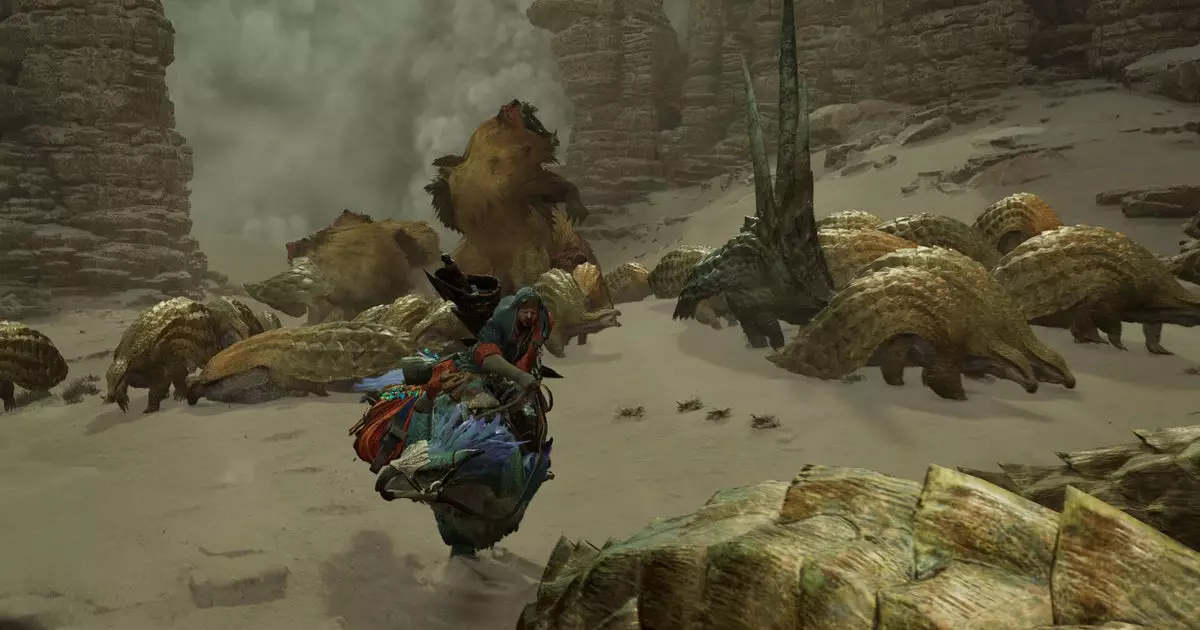In the age of gaming, where creative expression and character customization have dominated the introductory moments of many titles, it’s no surprise that players are often drawn to the visual elements of a game before they delve into its mechanics. This was my experience with the highly anticipated beta of Monster Hunter Wilds. While I initially spent far too much time perfecting the aesthetic of my feline companion—fiddling with the intricate orange-to-white color palette—I quickly realized that my engagement was superficial at best. The visceral thrill of battling massive monsters, a hallmark of the Monster Hunter franchise, took a backseat as I found myself more interested in the polished appearance of my cat than the core gameplay experience.
This fixation often reflects a broader trend in gaming where customization can overshadow fundamental mechanics. Players can become so enamored with personalization that it stifles their exploration of what the game is truly designed to offer—combat, strategy, and an immersive world. The worry, and perhaps an unfortunate byproduct, is that this might dampen the excitement rooted in the series’ rich legacy of monster-slaying and tactical gameplay.
After skimming through some online discussions about Monster Hunter Wilds, it became clear that the game’s combat mechanics were eliciting mixed reactions. A significant point of contention revolves around the concept of ‘hitstop’—the brief pause in animation that occurs upon a weapon’s successful hit on an enemy. This element is pivotal to the overall satisfaction of the combat experience; it serves as an essential bridge linking the player’s inputs with the in-game feedback they receive.
An analysis shared by a user named Blue Stigma highlighted this aspect in revealing detail. According to this breakdown, the Monster Hunter franchise has historically emphasized hitstop to enhance the feeling of weight and power each weapon wields. In prior iterations, a weapon’s hitstop would provide players with a tangible sense of impact; for instance, a swing from the switch axe in Monster Hunter Generations Ultimate would establish a quarter-second delay, allowing players to appreciate their strength. In contrast, the beta of Monster Hunter Wilds presents a stark departure, apparently reducing hitstop to a frustrating zero frames, leading to a limp and lackluster sensation when attacking foes.
This analysis positions hitstop not merely as a feature but as a critical element that reinforces the core enjoyment of the game. A reduction in these tactile signals displaces the player from the visceral, engaging combat experience that fans have come to expect.
The arguments articulated by Blue Stigma resonate deeply within the community, highlighting the broader implications of combat mechanics on player satisfaction. Combat in Monster Hunter titles is not just about successfully targeting and defeating a monster; it’s interwoven with the sensations those actions elicit. A downgrade in hitstop could lead to systemic issues in player engagement, potentially rendering the gameplay experience flat and less thrilling compared to prior entries.
Moreover, the debate prompts a larger conversation about how games evolve. While innovation is essential, it’s equally critical to retain those fundamental features that contribute to player satisfaction. The excitement of ‘bonking’ monsters must come with a powerful feel, and if that experience diminishes, players may find themselves drifting away—not just from the game but from the franchise as a whole.
Ultimately, the challenge lies in balancing innovation with core elements that define the gameplay experience. It is crucial for developers to listen to community feedback regarding these features and recognize that players often crave those moments of tactile satisfaction. As we await further updates or the full release of Monster Hunter Wilds, it would be wise for Capcom to evaluate the concerns around hitstop and consider how these mechanics impact player enjoyment.
In the end, the success of a title in a beloved franchise is often determined not just by its visual flair or new features but by the ability to resonate with the players on a fundamental level. The thrill of combat is a symphony of mechanics, sensations, and visual feedback—each element needs to harmonize flawlessly to create an unforgettable experience. Let’s hope Monster Hunter Wilds can rise to this challenge, lest it become a cautionary tale of lost engagement in the pursuit of aesthetic novelty.


Leave a Reply